Part 12: Burma: December 25, 1941

What we found out in our top-secret briefing, was that in 1940, Japan had successfully invented an amazing new technology. It was no less than the ability to travel through time. One problem was that the energy requirement was tremendous. It was also limited to about a few months, give or take. It was decided that to avoid tipping off the enemy, we could only use this technology a limited number of times, possibly only once. We'd need to find a way to keep our soldiers in the dark -- once we went back, there would be no possibility of coming home for the several months it would take us to 'catch up'. But when used correctly, it would multiply our forces and shock the enemy so much that they probably wouldn't ever be able to figure out where all these divisions appeared from. The Emperor personally selected our army for this task; it is an unbelievable honor.
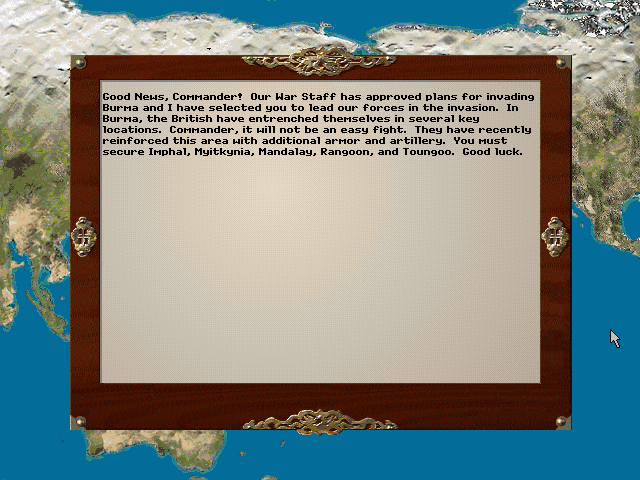
The plan had to be put in place several months prior. After securing Singapore, our units would be shipped out all at once on the way northward. On the way there, the device would be activated at sea, and we'd all jump back in time about 100 days. Naturally at that point there was to be a lockdown on any sort of communications. Any indications of the real date from enemy sources will be dismissed as propaganda. If we finish our operation early, we'll even get a bit of a break from combat.
As our previous selves handle the drive to Singapore, we'll be getting a jump start on pushing back the British to India. With this edge, it should provide us the chance to then go on and kick them entirely out of Asia.
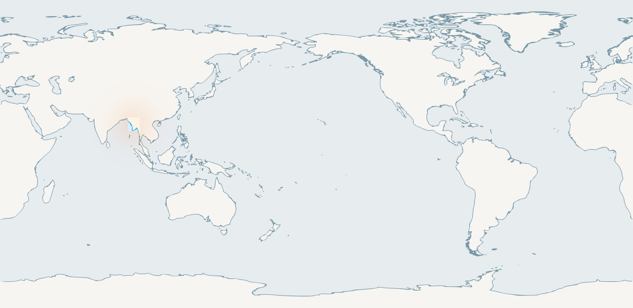
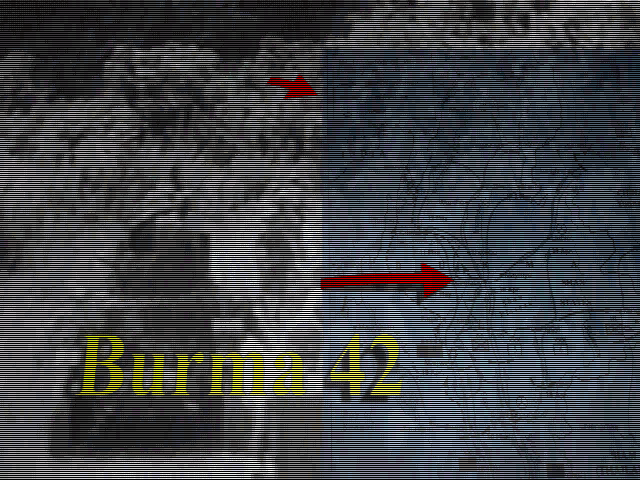
Burma
December 25, 1941
Objectives: (Rangoon [100x2]), Rangoon {Airfield} [100], Inland City [100], Yenang-Yuang [100], Mandalay [200x2], Myitkyina [100], Kalewa [10], Imphal [100x3], Jaipur [10]
So in real life, the Japanese invasion of Burma started in January of 1942. However, we see that this battle begins with Rangoon already in Japanese hands. That would give a more reasonable time of March 1942 for the start of this battle. It then could even have matched up well enough with the end of Singapore - the job done there, our forces arrive as reinforcements for the already partially successful army. Starting in December just seems like a mistake. Arguably the Southeast China scenario is a year off as well, but at least that could be played off within the campaign since nothing occurs in between.
OOB
pre:
Unit Name Unit Type [Transport] Exp
Land Units
1.1st Hohei 1940 Hohei 1940[Isuzu] -
2.2nd Teishin Dan Teishin Dan 1940 *
3.3rd Hohei 1936 Hohei 1936[Isuzu] **
4.4th Hohei HW 1936 Hohei HW 1936[Isuzu] *
5.5th Engineers 1936 Engineers 1936[Isuzu] ****
6.26th Bicycle Infantry Bicycle Infantry -
7.The Japonies Kihei ****
8.My Tanks are so kawaii Type 95 Ha-Go ***
9.13th Type 97 Chi-Ha Type 97 Chi-Ha -
10.17th Type 97 Chi-Ha Type 97 Chi-Ha -
11.22nd Type 92 Type 92 *
12.25th RA 97 RA 97 (Isuzu) -
13.Steel Death Ho-Ni 3 *
14.Cherry Blossoms Float Type 91 105 [Isuzu] -
15.24th 94 Mtn Gun 75mm 94 Mtn Gun 75mm -
16.23rd Sa-To Sa-To ***
Aux (by qty)
2 Bicycle Infantry *
1 Burma Indep. Army -
1 Burma Indep. Army *
1 Burma Indep. Army **
1 Hohei 1940 *
1 Type 94 Light *
1 Type 95 Ha-Go *
1 Type 97 Chi-Ha -
1 94 Mtn Gun 75mm[Isuzu] -
Air Units
17.Hirohito's Hieneys Nakajima Ki-27 Nate **
18.Sabai's Flying Circus Kawasaki Ki-10 Perry *
19.Nathan is my Father Nakajima Ki-27 Nate *
20.21st A6M Zero A6M Zero -
21.11th G3M Nell G3M Nell ***
Aux (by qty)
1 A6m Zero *
1 Ki-43 Oscar *
1 G4M Betty **
Starting Prestige: 248 after purchases/upgrades
Starting VP:
We're operating with the assistance of some native Burmese forces. Since their training and equipment is below the standards of our own forces, we'll be using them in a peripheral but potentially important part of our own plan. It will also be nice to have additional armor in the auxiliary. We have a lot of ground to cover, and we'll need a full complement of troops in several sectors to accomplish the task.
Some new ground forces are added; the bicycle infantry should serve us well as we move northward. Another medium tank needs to gain experience for our continued ground campaigns, since we're facing tougher opposition now. Finally, a new Zero arrives to replace Remember Eniwetok. This has left us fairly depleted in prestige. What's going to happen in this battle is that our plane units aren't going to be receiving replacements after a few turns. Damaged units are going to be withdrawn to safer airbases, and only called forward if we are unable to win the battle in the air.
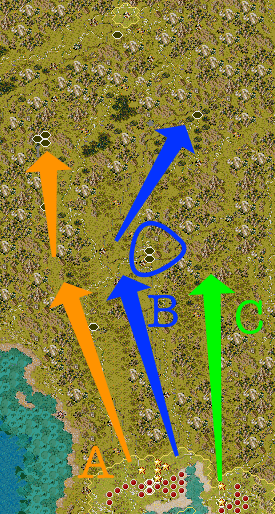
While at the moment we are operating in the fairly open space around Rangoon, as we move northward we're going to be heading into very rugged terrain. There are not many roads connecting the cities of Burma, and the possible routes between them mean that forces heading toward one objective will not be easily transferred in any other direction.
We're thus more-or-less forced into a multi-pronged approach. Imphal is the main objective on the western route (A); it likely won't need as many units, and the route there is also narrow enough that additional forces would not help. The middle route (B) needs to capture the key city of Mandalay and close off any route for the Chinese to provide support, but it also must get as far north as Myitkina, or else that route will never be secure. The plan, then, is to not capture Mandalay immediately, but to keep it isolated until we can force its surrender. Finally, the Burmese Independence Army will guide their troops through a mountainous jungle in order to cut the road from the east. They are expected to halt any enemy units retreating from the city when we finally do attack. If we go far enough north, the mountains are a nearly impenetrable barrier to get into India, so we don't have immediate plans to push all the way to Jaipur.
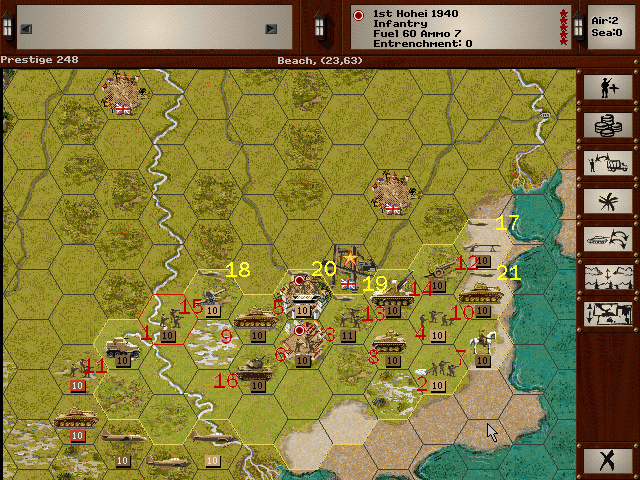
The core is set up to first focus on capturing Rangoon. Once this is accomplished, the main groups will split off. Reconnaissance should reveal whether we need to switch any forces to one side or the other, as once they start up that road, it's going to be nearly impossible to transfer; at this time we haven't fully committed the forces to either route.
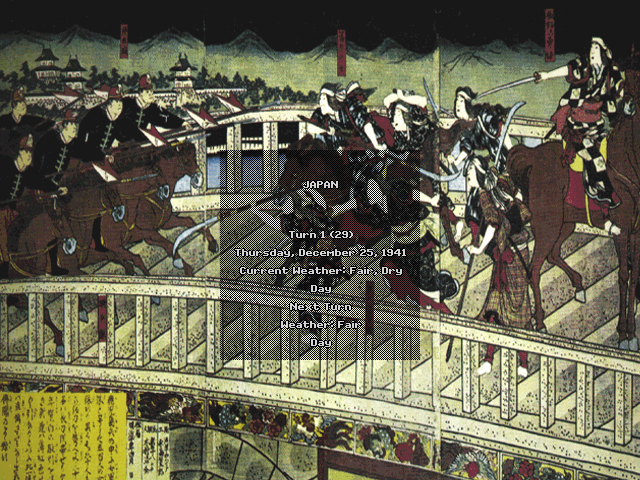
Axis Turn 1: December 25, 1941
Day, Fair (Dry)
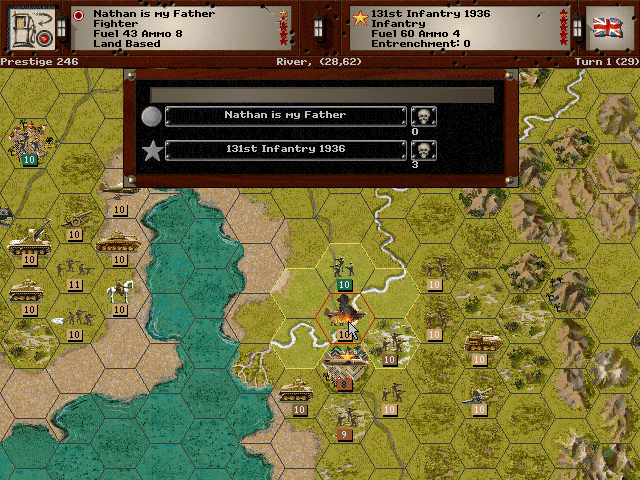
Our planes support the Burmese forces moving northward; there is no apparent enemy air cover here.
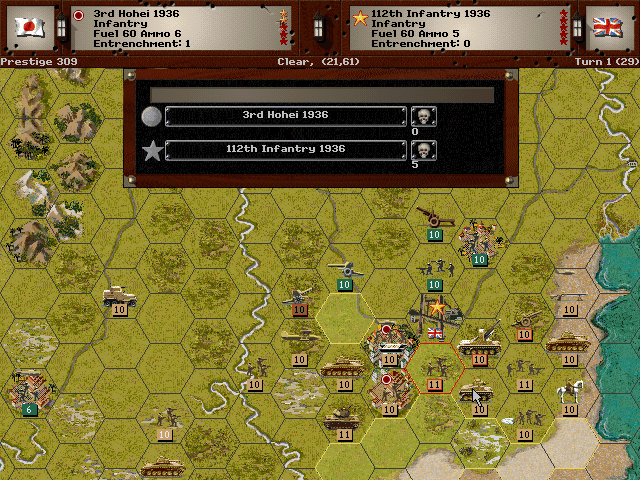
A combined attack from the south captures the airfield at Rangoon.
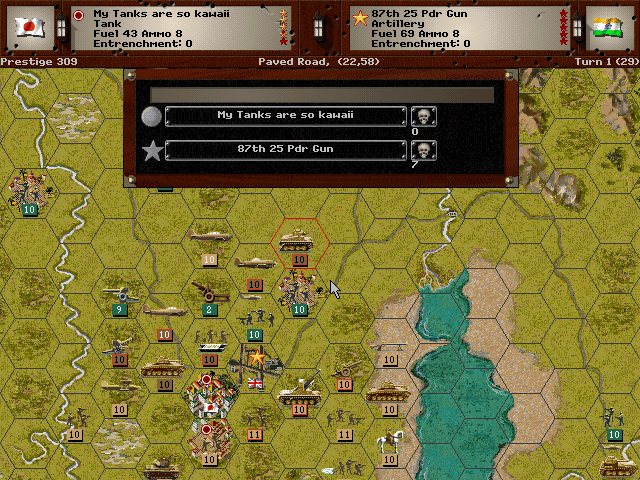
The little tanks are able to rush to the enemy's rear and inflict heavy casualties on the guns.
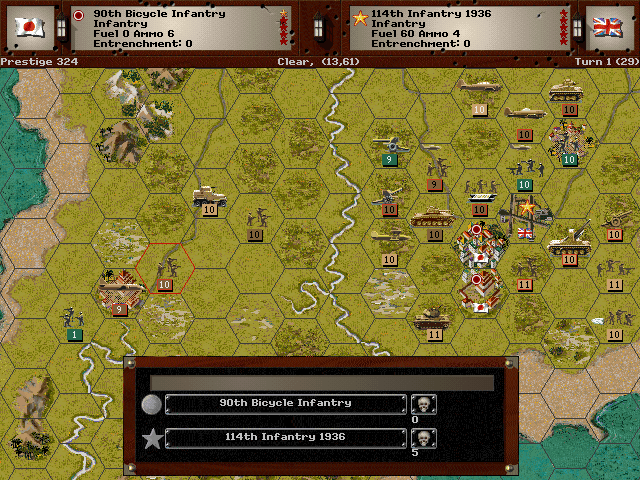
More air strikes allow Bassein to be captured in the west.
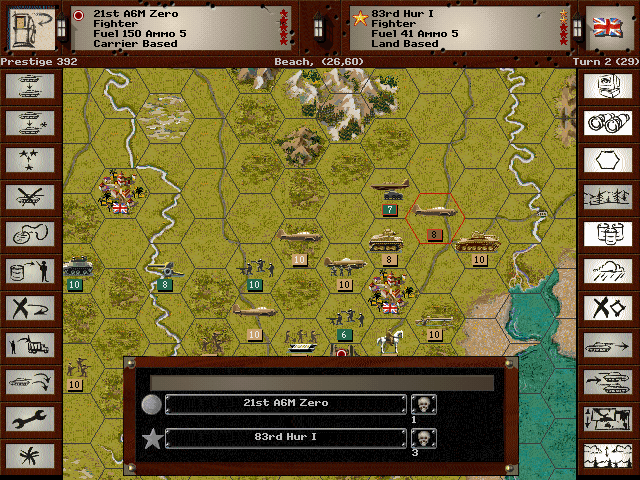
The Zero beats the enemy Hurricane fighters with no trouble.
Allied (United Kingdom) Turn 1: December 25, 1941
Day, Fair (Dry)
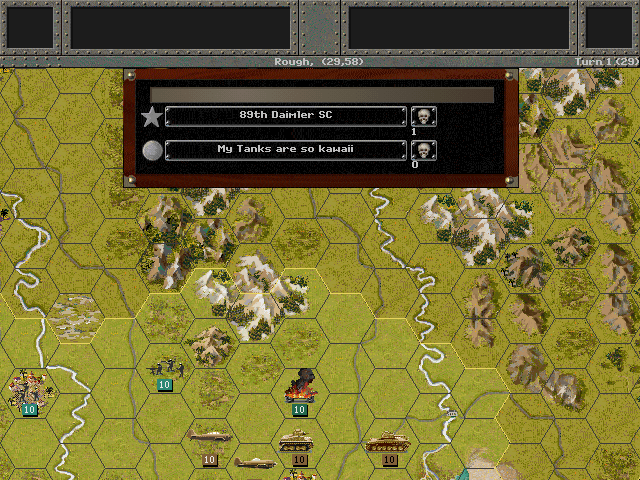
The enemy has their own fast-moving vehicles, and the Ha-Go's barely escape taking greater losses.

As the British retreat, they manage to deliver a big blow to our front-line infantry.
Axis Turn 2: December 26, 1941
Day, Fair (Dry)
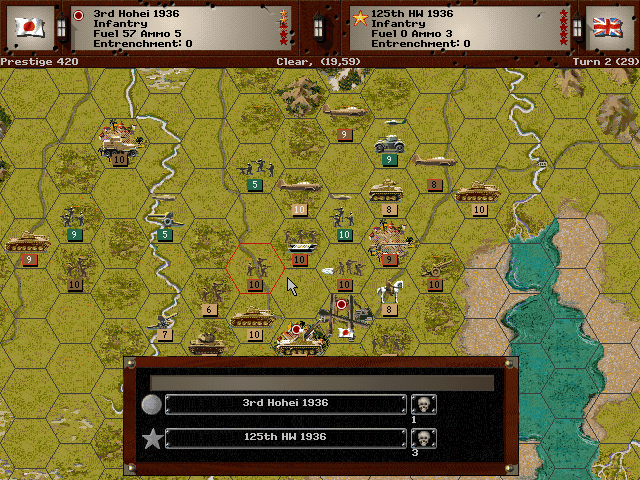
We continue to push back on the front line, while the bombers interdict the retreating troops.
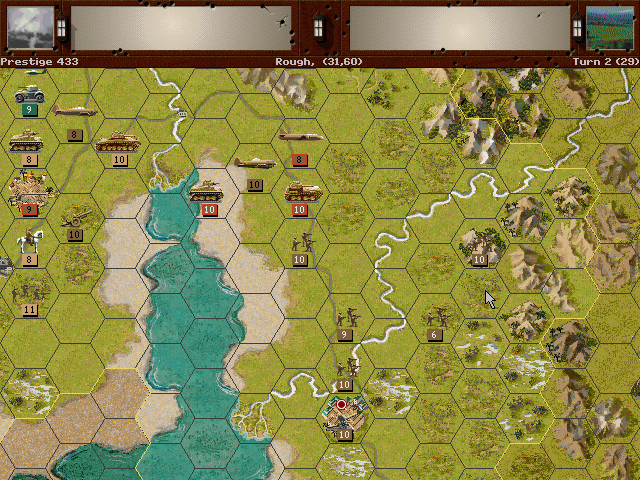
It does not take long to link up with the forces coming from the southeast.
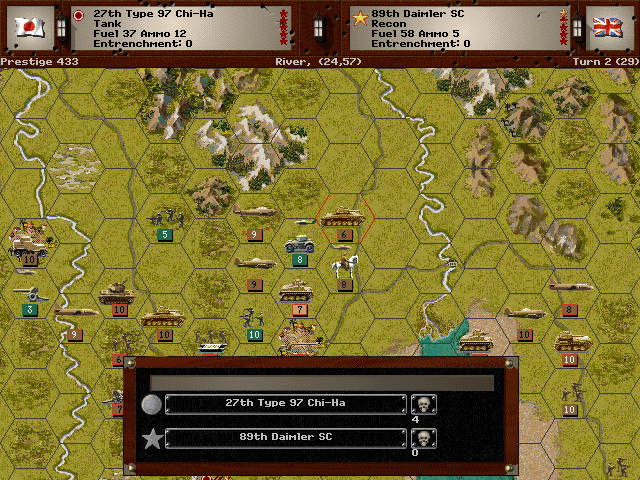
The slow medium tanks prove surprisingly susceptible to the cannon of the Daimler car.
Allied Turn 2: December 26, 1941
Day, Fair (Dry)
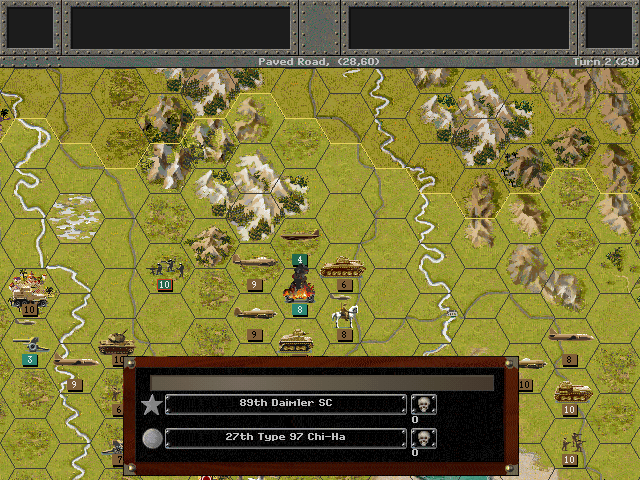
Once they get prepared, the Chi-Ha's are able to avoid further losses.

With their escape route cut off by our scout cars, the British AT guns attempt to break out, but fail.
Axis Turn 3: December 27, 1941
Day, Cloudy (Dry)
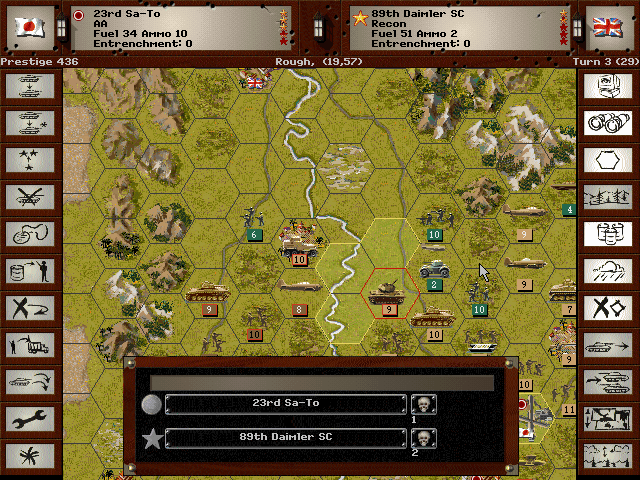
Under the right circumstances, the Sa-To can be quite dangerous to lightly-armored vehicles.
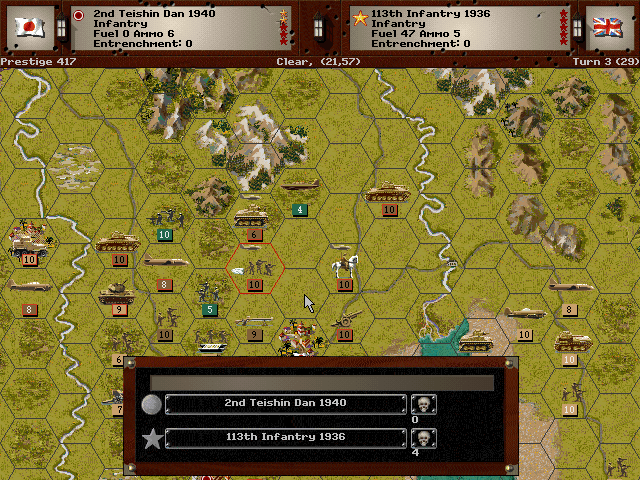
Thanks to the speed of our armored advance, the infantry are able to catch up and eliminate large groups of British forces.
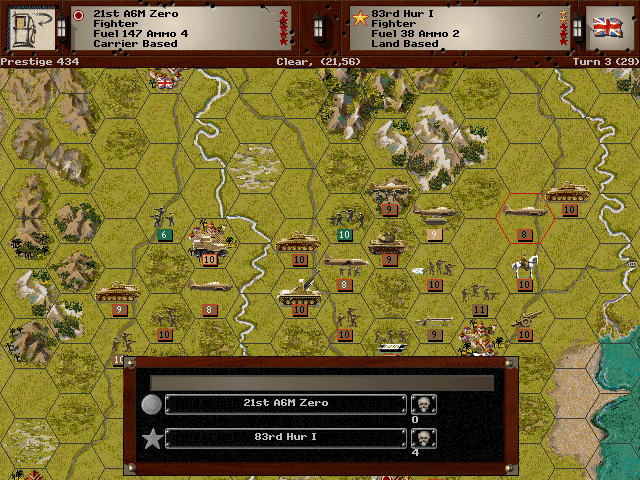
The Zeros help us achieve control of the air in the south.
Allied Turn 3: December 27, 1941
Day, Fair (Dry)

There are still more enemy planes to deal with, but the pilots seem to be less skilled than ours.
Axis Turn 4: December 28, 1941
Day, Cloudy (Dry)
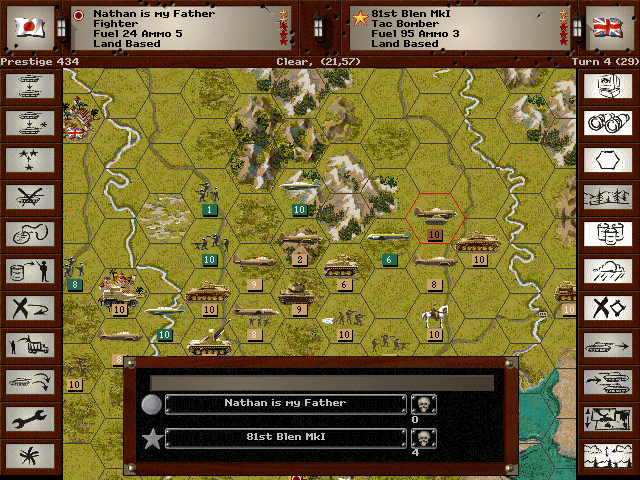
The British have bombers in the area, but they foolishly left them unescorted.
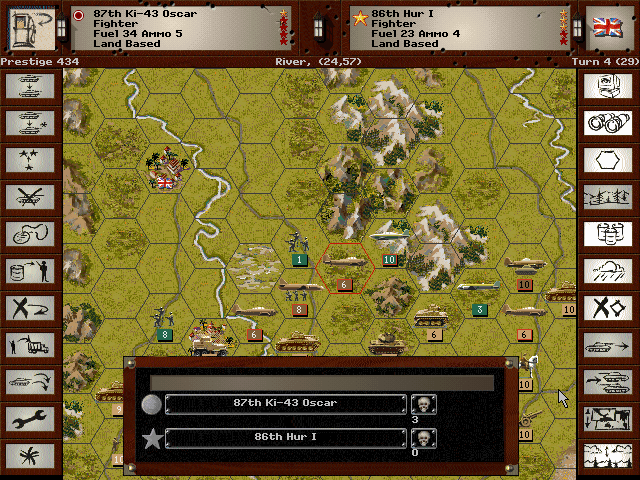
Although there is a squadron of fighters with pilots that are a cut above the rest. We can expect to have some trouble dealing with them.
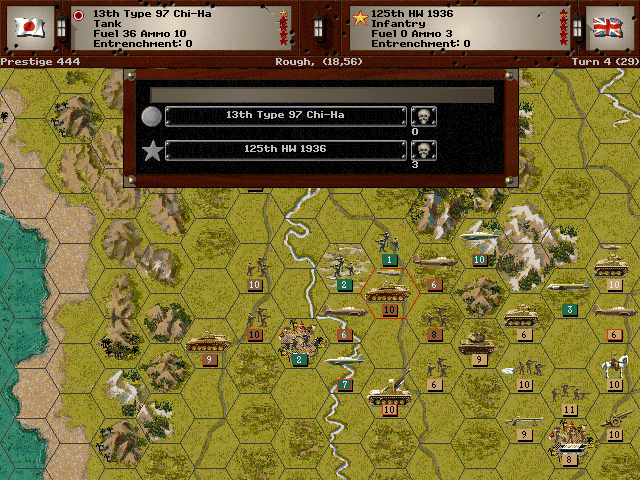
On the ground, the medium tanks seem to be most effective against the enemy foot soldiers.
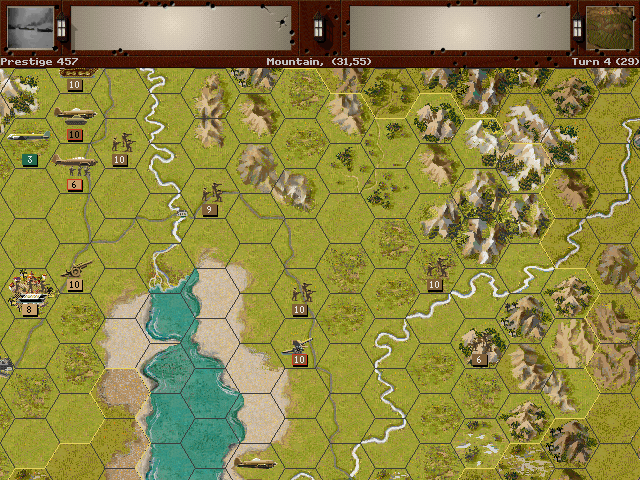
The Burmese Independence Army moves up and prepares for their trek through the mountains.
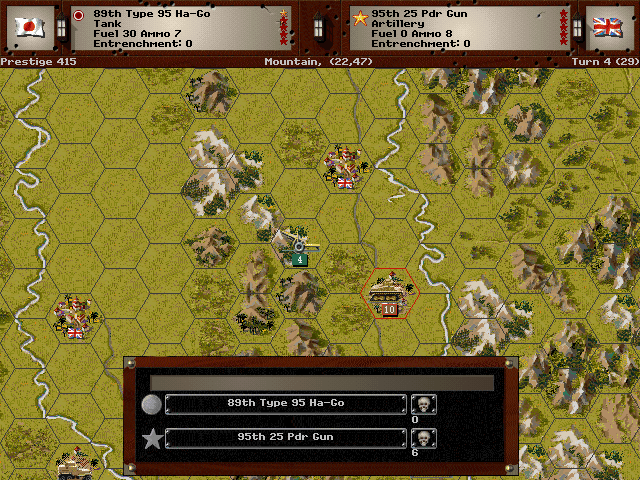
The road to Mandalay is being cleared as well.
Allied Turn 4: December 28, 1941
Day, Fair (Dry)
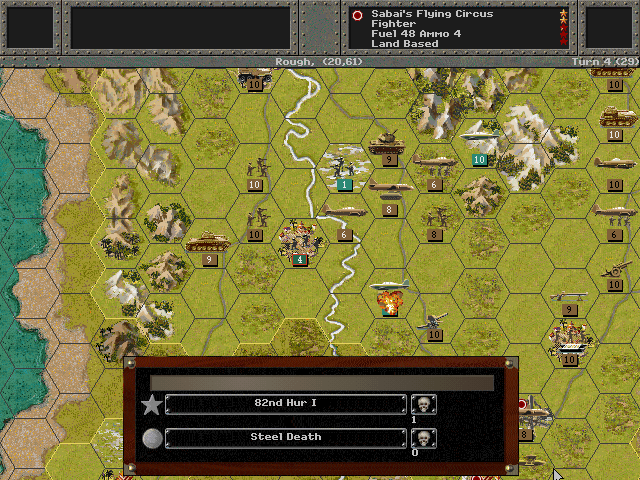
One set of Hurricanes hopes to attack the ground troops instead of deal with our numerous fighters. It doesn't go that well for them, however.

The more experienced pilots are unafraid to attack any planes on our side, however.
So far, our reinforcement operation in Burma has been a success. Nobody yet suspects the incredible means by which we fielded an entire duplicate army; so far the it seems our intelligence has been able to mislead them as to the true origin of the Burmese force.
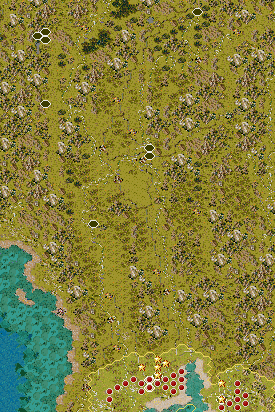
Unit Spotlight
Type 94 75mm Mountain Gun
PG Name: 94 Mtn Gun 75mm Type: Artillery
Effective Date: 7/36
Value:8 Cost:96 Spot:1 Move:2 MM:Leg Trans:Air Fuel: -
Init:1 Range:2 SA:11 HA:5 AA:0 NA:0 GD:2 AD:6 CD:0 TT:Soft Ammo:6
This was an infantry gun that could easily be disassembled, transported, and reassembled by a team of soldiers. That made it ideal for use in difficult terrain, even if it wasn't all that powerful. It saw widespread action in the Pacific, and was later copied by China for use in the Korean War.
In-game analysis: Despite the limitations of 75mm artillery, this unit is attractive thanks to the fact that it can actually move with the troops. The only downgrade from the towed 75mm gun is a reduced ammo level, but I'd say it's worth it.
Hosho-class Carrier (1 built)
PG Name: Hosho Type:Carrier
Effective Date: 7/36
Value:11 Cost:198 Spot:3 Move:5 MM:Deep Naval Fuel: 64 Capacity: 1
Init:3 Range:0 SA:0 HA:0 AA:[5] NA:0 DA:0 GD:15 AD:2 TD:10 Ammo:40
This was Japan's first aircraft carrier, built in 1922. As such it served more as an experiment in how to build and use carriers than as anything else. It still saw action during the 1930s and was even present with Yamamoto's (reserve) fleet during the Battle of Midway.
In-game analysis: It's cheap, but also terrible. The absolute lack of ability to defend itself (and the pitiful air defense) means that it'll need fighter CAP, and probably from another ship to boot. As part of a fleet, maybe it could be usable as an extra support platform, although with only one slot, it's not that good at it. It's not something I'd actually want to purchase.